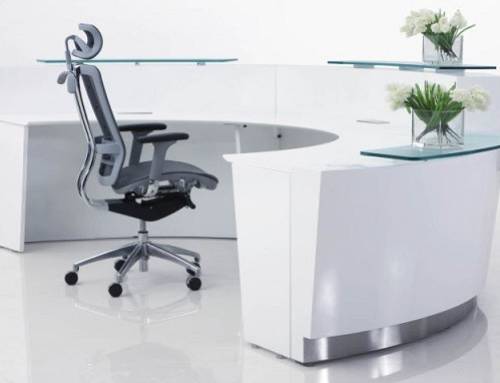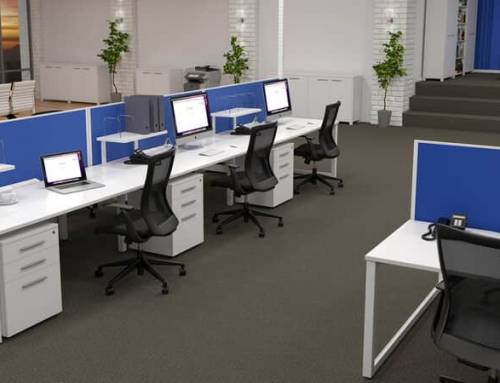The significance of ergonomics in office spaces has surged, given our ever-increasing dependence on sedentary work routines. Research indicates prolonged sitting can contribute to several health problems, including musculoskeletal discomfort, cardiovascular diseases, and obesity.
Consequently, selecting office furniture that prioritizes the user’s well-being is essential. This article explores various options well-suited for your health.
Ergonomic Chairs: Supporting Your Back and Posture
Ergonomic office chairs offer various benefits, including proper lumbar support, customizable adjustments, and comfortable cushioning. Key features to consider in an ergonomic chair include:
- Moulded seat foam: A good quality moulded seat foam will provide comfort along with help to support to your lower back.
- Adjustable seat height: A pneumatic adjustment lever allows the user to find the perfect height to maintain an ideal knee and foot position.
- Lumbar support: An ergonomic chair should have a back rest tilt option and built-in lumbar support or adjustable backrest, ensuring that your lower back’s natural curve is maintained, alleviating lower back pain.
- Adjustable armrests: These can be adjusted to a comfortable height, allowing shoulders to relax and reducing the risk of developing carpal tunnel syndrome.
- Swivel and mobility: Swiveling ability and smooth castors enable easy movement and avoid strain when reaching for items.
Sit-Stand Desks: Encouraging Movement and Flexibility
Sitting for prolonged periods can be detrimental to your health, with implications such as poor blood circulation and increased risk of developing chronic diseases. Sit-stand desks, also known as height-adjustable desks or standing desks, provide a viable solution to sedentary office life.
These multipurpose desks come in manual and electric versions, allowing users to alternate between sitting and standing regularly and effortlessly throughout the day.
Transitioning to standing work positions throughout the day can alleviate muscle fatigue, improve blood circulation, and foster overall well-being. Studies have also shown that standing desks boost office productivity and energy levels. So, if you wonder which office furniture is best for your overall health, consider standing desks.
Ergonomic Keyboards and Mice: Protecting Your Wrist
Traditional keyboards and mice can strain your wrists and arms. Ergonomic alternatives can significantly reduce the risk of developing carpal tunnel syndrome and repetitive strain injuries.
Ergonomic keyboards often feature a split or tented design that promotes a natural wrist angle. The curved layout prevents wrists from bending, reducing strain and discomfort. Similarly, an ergonomic mouse aims to alleviate wrist pressure by adopting a design that fits the natural contours of your hand. Vertical mice offer an alternative grip, lessening forearm rotation and resulting strain.
Footrests: Enhancing Posture and Circulation
Incorporating a footrest into your office set-up can dramatically improve posture and comfort. Footrests reduce pressure on the lower back and legs by elevating and supporting the user’s feet to maintain an optimal seating position. Additional benefits include promoting blood circulation and reducing the risk of developing deep vein thrombosis.
Monitor Stands and Mounts: Preventing Neck and Eye Strain
A monitor stand or mount is crucial in maintaining ergonomic comfort when working at a desk for extended periods. These devices ensure the computer screen is at an appropriate eye level, preventing strain on the neck, shoulders, and eyes. Various adjustable mounts on the market offer screen height, tilt angle, and rotation flexibility.
Conclusion: Invest in Your Health
Choosing the right office furniture is an investment in your long-term health and well-being. Ergonomic chairs, sit-stand desks, ergonomic keyboards and mice, footrests, and monitor stands are all essential components of today’s office repertoire. Incorporating these items into your workspace can reduce stress and strain, and increase comfort and focus, leading to higher productivity and overall well-being.
Start by assessing your workspace and identifying areas that need improvement. Investing in ergonomic furniture ensures you cultivate an environment that safeguards your health while supporting your professional aspirations.









